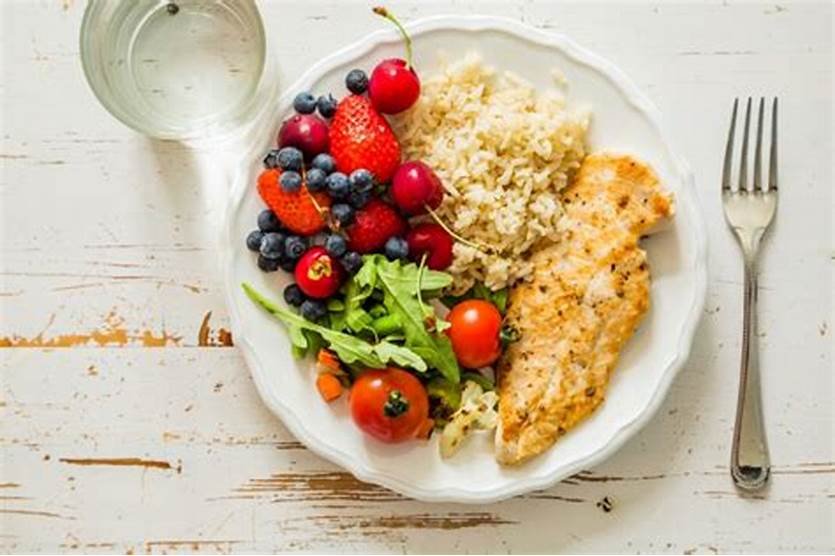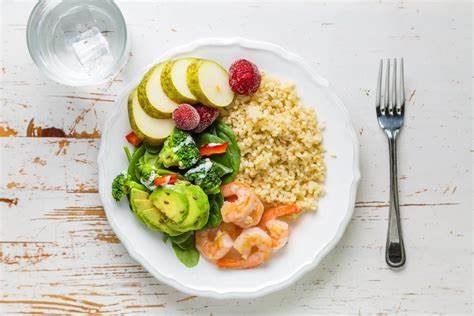Portion Control in Maintaining a Healthy Diet
Maintaining a healthy diet is crucial for overall health, but it’s not just about choosing the right foods—it’s also about how much you eat. Portion control plays a significant role in managing your weight, supporting digestion, and ensuring you’re getting the right balance of nutrients. In a world of oversized meals and convenient fast food, understanding and practicing portion control can help you achieve long-term health goals without feeling deprived.
What is Portion Control?
Portion control refers to the practice of regulating the amount of food you eat during a meal or snack. It doesn’t necessarily mean eating less; it’s about eating the right amount for your body’s needs. This is especially important because portion sizes have increased dramatically over the years, and what was once considered a standard serving can now seem too small compared to what is typically served in restaurants or packaged foods.

Why is Portion Control Important?
1. Helps with Weight Management
One of the primary benefits of portion control is its role in weight management. Overeating, even healthy foods, can lead to consuming more calories than the body needs, which can contribute to weight gain. By practicing portion control, you can prevent overconsumption and create a calorie deficit if you’re looking to lose weight or maintain a healthy weight.
2. Improves Nutrient Balance
Portion control helps ensure you get a balanced intake of nutrients from all food groups without overloading on one type of food. For example, consuming too many carbohydrates or fats can overshadow other essential nutrients like protein, vitamins, and minerals. By moderating portions, you can achieve a more balanced diet that supports overall health.
3. Supports Digestive Health
Eating too much food in one sitting can overwhelm your digestive system, leading to discomfort, bloating, and indigestion. Smaller, controlled portions are easier for the body to process, promoting better digestion and absorption of nutrients. This also reduces the strain on your stomach and digestive organs, improving your overall gut health.
4. Prevents Mindless Eating
When we eat larger portions or mindlessly snack, it can be easy to overconsume without realizing it. Portion control encourages mindfulness around eating, helping you become more aware of how much you’re consuming and when you’re actually full. This practice can prevent overeating, especially during stressful situations or when you’re distracted by work or entertainment.
Tips for Practicing Portion Control
1. Use Smaller Plates and Bowls
Studies show that people tend to eat more when they use larger plates or bowls because it creates the illusion of a smaller portion. By switching to smaller dinnerware, you can help control your portions while still enjoying a full plate of food.
2. Read Nutrition Labels
Nutrition labels provide valuable information on serving sizes, helping you understand what constitutes one portion of a specific food. Use this information to measure and adjust your intake, especially for packaged foods or snacks.
3. Practice the Hand Method
An easy way to estimate portion sizes is to use your hands as a guide:
- Protein: A serving of protein (such as meat or tofu) should be about the size of your palm.
- Carbohydrates: A serving of carbs (such as rice or pasta) should be about the size of your fist.
- Fats: A serving of healthy fats (like nuts or oils) should be about the size of your thumb.
- Vegetables: Aim for a serving of vegetables the size of your open hand or about two fists.
4. Listen to Your Body
Pay attention to hunger cues and learn to stop eating when you’re satisfied, not when you’re full. Taking smaller bites and chewing your food thoroughly can help your brain catch up with your stomach, allowing you to recognize when you’ve had enough.
5. Avoid Eating Straight from the Package
It’s easy to lose track of portions when you’re eating directly from a package or bag. Instead, portion out your food into smaller containers or bowls before eating. This prevents overeating and helps you keep track of how much you’re consuming.
Portion Control in a Practical Diet
Portion control doesn’t require you to count every calorie or weigh your food. It’s more about making small, sustainable changes that fit your lifestyle. Here’s how you can apply portion control in different types of diets:
- For Weight Loss: Focus on reducing portion sizes of high-calorie foods like desserts, fried foods, and processed snacks, while maintaining healthy portions of fruits, vegetables, lean proteins, and whole grains.
- For Maintaining Health: Aim to create a balanced plate, with each meal containing a portion of protein, complex carbohydrates, healthy fats, and vegetables.
- For Building Muscle: Adjust your portions of lean protein, complex carbs, and healthy fats to fuel muscle growth without excess calorie consumption.
Conclusion
Portion control is an essential aspect of maintaining a healthy diet and lifestyle. By regulating the amount of food you consume, you can manage your weight, improve digestion, and ensure you’re getting the nutrients your body needs to thrive. Whether you’re looking to lose weight, maintain a healthy lifestyle, or simply improve your eating habits, practicing portion control can help you achieve your goals while promoting long-term health and wellness.



